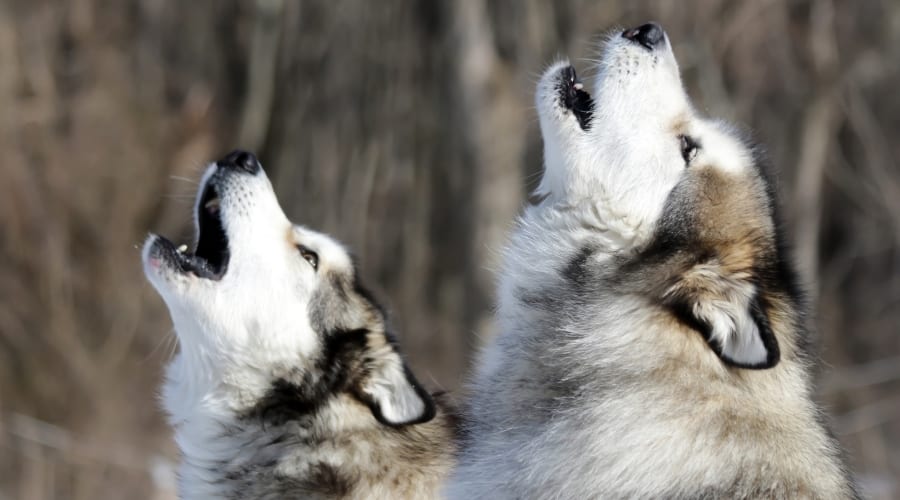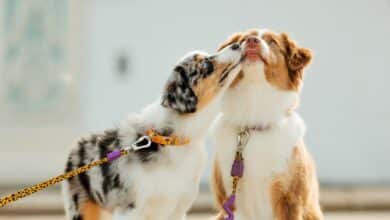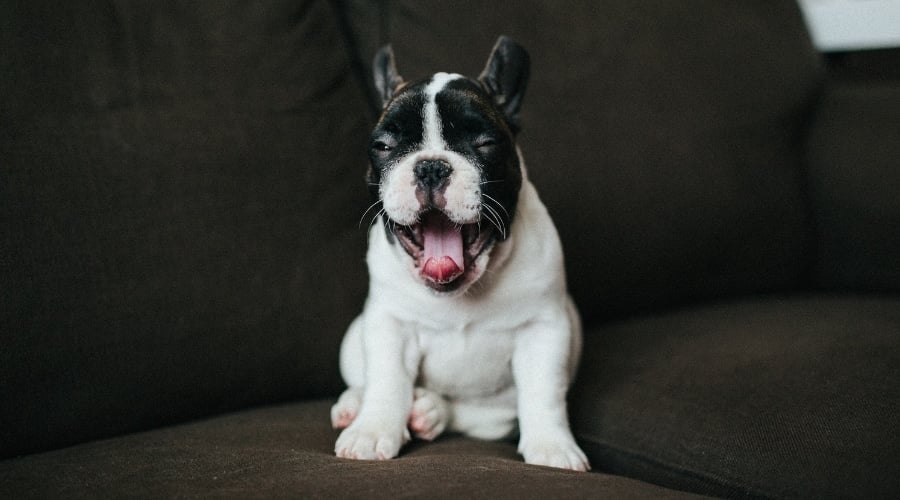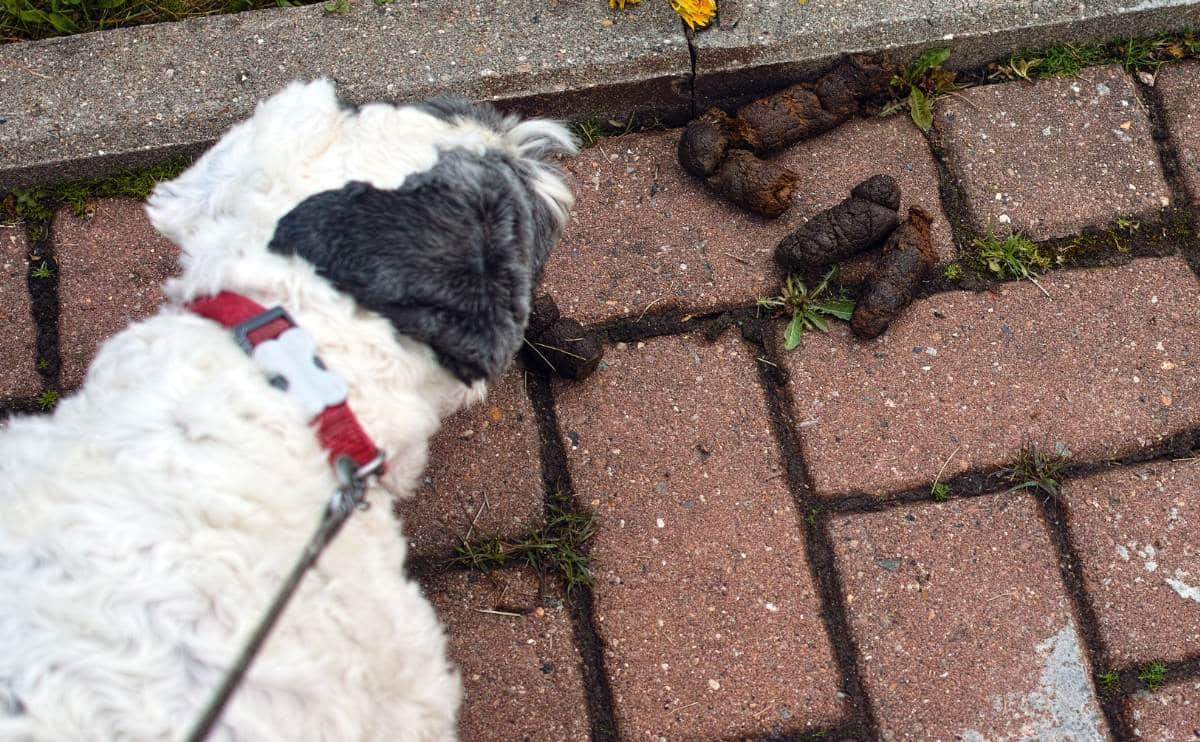Ever Feel Stalked…By Your Own Dog? This Explains Why Your Dog Follows You Everywhere You Go
When you purchase through links on our site, we may earn a commission. Here’s how it works.
Does your dog think “personal space” is just a myth? If you’ve ever felt their hot breath on your ankles during a bathroom trip or performed an Olympic-level save to avoid tripping over them in the kitchen, congratulations, you have a certified furry shadow. You’re not alone in this daily game of don’t trip over the dog! What makes a dog so interested in following their human companion everywhere they go?
Table of Contents
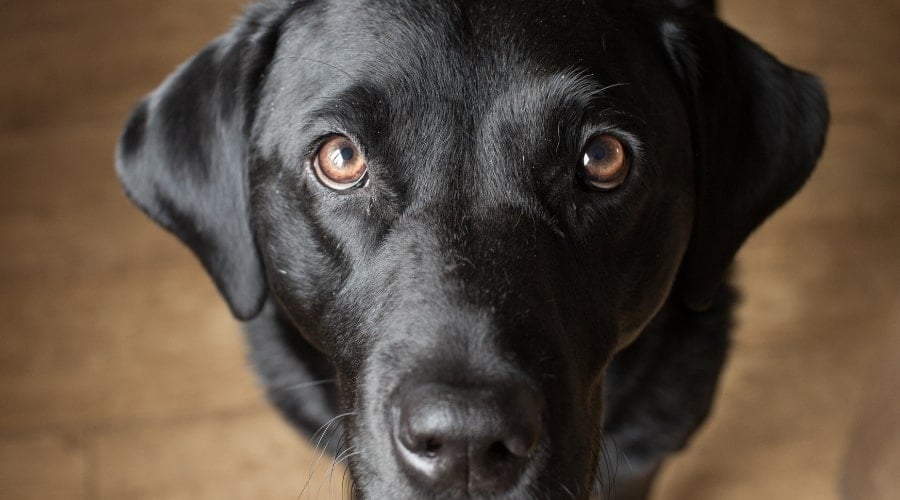
Spoiler alert: It’s not just because they love you (although they totally do). There’s a whole mix of instincts, psychology, and learned behavior behind this adorable habit. It may start as cute and endearing if you head into your office with your four-legged friend following closely behind. But, after a while, it may signal behavioral issues that you must address.
I explain the eight most common reasons your dog sticks to you like glue. Whether they see you as the pack leader, their personal security detail, or just the keeper of snacks, I’ll explain what’s behind the behavior, and if you’re ready for a little more breathing room, I’ve got tips to help with that, too.
Too Close for Comfort: Hilarious and Awkward Tales of Dogs Invading Personal Space
Some of our Canine Journal team members were willing to share how their dogs invaded their personal space. Have any of these happened to you? Let us know in the comments.
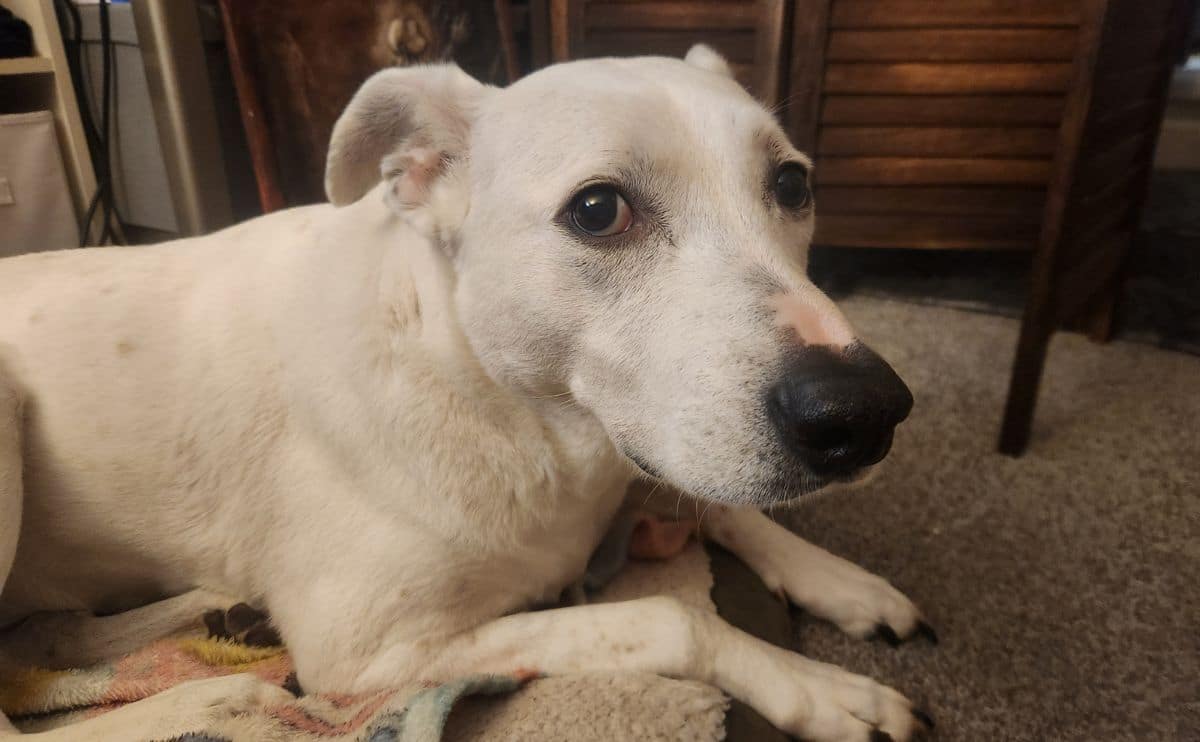
Daisy: The 80-Pound, Overly Devoted Shadow
My dog Daisy, a Labrador Pitbull mix, is convinced that she and I are one entity. Not just best friends, not just inseparable, but literally the same being. There is no such thing as alone time in Daisy’s world. If I move, she moves. If I sit, she sits. If I get up to throw something away, she gets up too because, apparently, I am incapable of handling basic tasks without an 80-pound bodyguard watching my every move.
For the most part, I do not mind having my very own furry entourage. It is kind of nice having a constant companion, except for when things get awkward. Like when I am changing clothes. I learned the hard way that some personal moments require firm boundaries because Daisy does not understand the concept of privacy. The first time I bent over to grab my pants and felt a cold, wet dog nose in a very personal area, I nearly hit the ceiling.
Now, I have to physically lock her out of the room anytime I change because she just cannot help herself. I get it, dogs are naturally curious creatures, and yes, they love a good sniff of the crotch or behind. But there are limits, and I have had to establish a hard and very necessary rule. No Daisy in the room while I am getting dressed. Some experiences, like an unsolicited surprise nose boop to the nether regions, only need to happen once before you decide you are never taking that risk again.
– Danielle DeGroot, Rescue Dog Mom, Canine Journal Research & Writing

Tiny, the Bathroom Bodyguard
Tiny may be small, but his biggest job is guarding the bathroom door. The moment I head that way, he rushes to his post. As soon as the door closes, he plants himself outside, ears up and tail wagging, like he is standing watch over something very important.
If I take too long, he lets out a dramatic sigh. If I really test his patience, the whining starts. Showers are the worst. He presses his nose under the door like he is making sure I have not disappeared. When I finally step out, he is sitting there with a look that says, “Took you long enough.”
I have tried sneaking in. I have tried distracting him with treats. Nothing works. Tiny is not just a dog. He is a bathroom bodyguard, a dedicated watchdog, and a firm believer that I should never, under any circumstances, be alone.
– Sally Jones, Dog Mom, Canine Journal Writing & Editor
As you can see, our team here at Canine Journal has plenty of clingy dogs who follow us everywhere, and we mean EVERYWHERE we go!
8 Hidden Reasons Behind This Behavior (Some May Surprise You!)
If your dog follows you everywhere, even into the bathroom, while a little too close for comfort, it’s not unusual behavior. Most of the time, it’s just their way of showing love, loyalty, or a little nosiness. But sometimes, there’s more to the story.
If your pup is pacing, acting restless, looking unsteady, or showing signs of nausea, it could be a sign of distress, and that’s when a call to the vet is a good idea. While most cases of Velcro dog syndrome are harmless and just part of their personality, it’s always best to first rule out any medical concerns.
Now, let’s get into the real reasons your furry shadow is always one step behind you, yes, even when you’re just trying to pee in peace.
1. They Just Really, Really Love You (And Want to Be Near You!)
Our dogs are part of our world, but we are the world to them. Their entire day revolves around us, and in their minds, every moment is better when they’re right by our side (or, more accurately, underfoot).
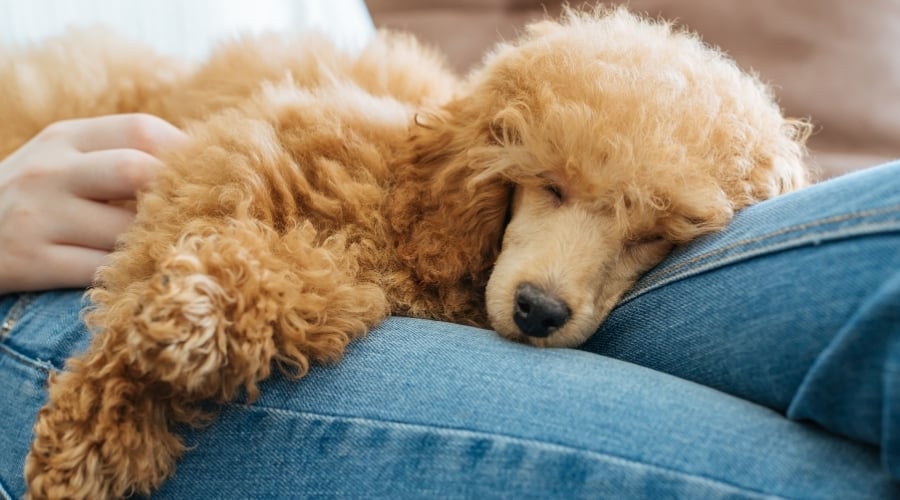
If your pup follows you from room to room like a furry little shadow, it’s not just habit. It’s pure, unconditional love. They’re all in, whether you’re making dinner, folding laundry, or just trying to sneak off for a moment of peace. And honestly, who wouldn’t want a built-in best friend who thinks you’re the most important person on the planet?
How Do I Know If My Dog Loves Me?
Learn more about how to show your dog you love them, and understand more about how our dogs show us love in our detailed guides. You can also meet some of the most affectionate dog breeds here.
2. Congrats, You’re the Pack Leader: Now They Worship You
Our pups may be domesticated now, but they are still attached to their wild roots. Being descendants of wolves, our canine friends have a few ingrained qualities that affect their relationships with others.
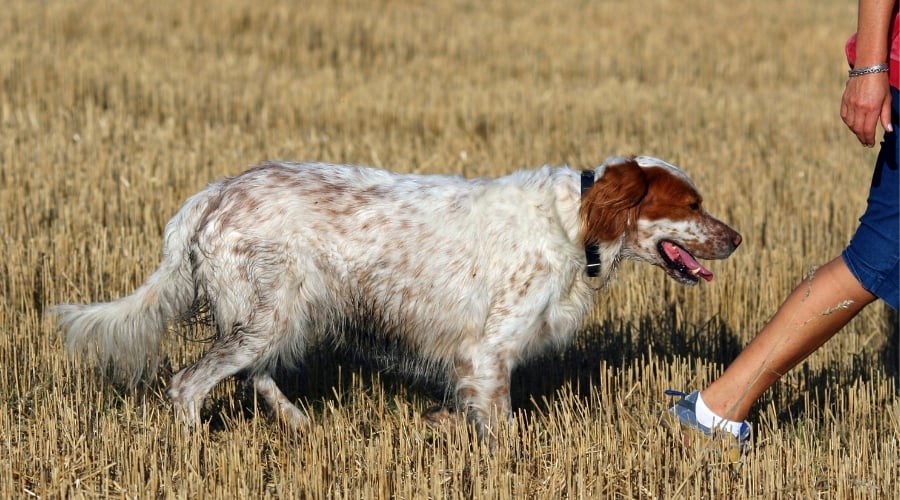
One of these ingrained traits involves the need to be in a pack, and this brings with it the admiration of their pack leader. With being the center of their lives, our dogs often look to us for just that.
Not only do our dogs consider us their pack leader in many cases, but they can also imprint on us if we bring them into our home at a young age. These furry friends may look up to us as parental figures, further amplifying their need to be around you at all times.
If your pup seems to follow you everywhere, it may only see you as the pack leader. A 2020 study published in Comparative Psychology, a section of the journal Frontiers in Psychology, looks more closely at how dogs perceive, interact, and take cues from humans.
3. Your Personal Bodyguard in Fur Form
Because our dogs may see us as their pack leader, they may feel a need to fall into the “protector” role. Following you around your home may be their way to keep an eye on you and prevent any predators from stepping in when you are vulnerable.
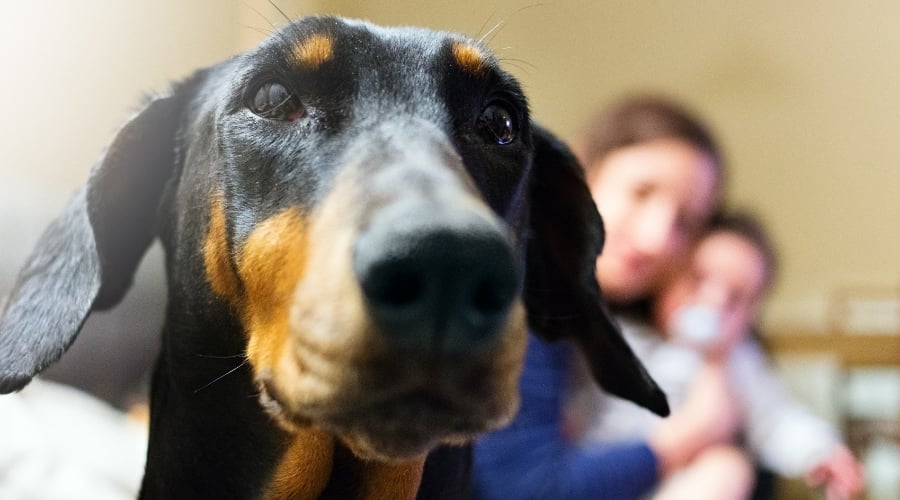
Some dogs take their job as your personal bodyguard very seriously. They are not just curious about where you are going; they are ensuring you are always safe. Breeds like German Shepherds, Dobermans, Rottweilers, Belgian Malinois, and Cane Corsos are famous for their protective nature. They do not just guard homes; they guard you. Even if there is no real danger in your living room, they do not see it that way.
Every doorway you walk through, every time you step outside, even if the wind blows, they are scanning for threats. That rustling noise outside? They heard it. Is the delivery person on the porch? Noted. They are always on alert, even if they are curled up on the couch.
Some dogs do this out of instinct, others because they feel a deep bond with their person. Either way, their devotion runs deep. When they follow you from room to room, they are not just being clingy. They are standing watch, making sure nothing gets to you when they are on duty.
4. Separation Anxiety or Just Drama? Why Your Pup Panics When You Leave
Is your furry friend glued to your side from the moment you wake up until the second you walk out the door? Do they whine, pace, or even let out a heartbreaking howl the moment you leave? If so, you may have a pup struggling with separation anxiety. Being apart from their favorite human is not just lonely for dogs with separation issues. It is downright distressing.
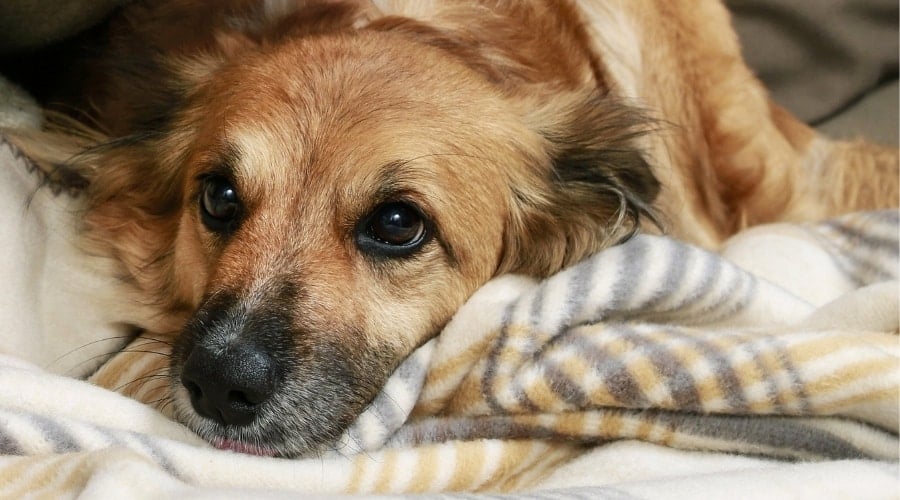
Separation anxiety goes beyond the usual longing for attention. Dogs with this issue may bark incessantly, chew on furniture, scratch at doors, or even have accidents indoors when left alone. Some refuse to eat, while others pace anxiously until their person returns. It is not about bad behavior, it is about fear. To them, your absence feels like an unbearable loss, and they do not know how to cope.
Helping a dog with separation anxiety takes patience and consistency. Start by creating a routine that builds confidence in being alone. Try leaving for short periods, gradually increasing the time away so they learn you always come back. Interactive toys, puzzle feeders, or a special treat they only get when you leave can help distract them. Some dogs find comfort in background noise, like soft music or a calming TV show. In more severe cases, crate training or working with a professional trainer can make a huge difference.
5. The Ultimate Nosey Neighbor… Who Lives in Your House
Do you know that one neighbor who always seems to know everything about what’s happening on the block? The one peeking through the blinds at the slightest commotion? Well, if your dog follows you from room to room, pokes their nose into every bag you bring home, and insists on supervising every single thing you do, congratulations, you are living with the ultimate nosey neighbor.
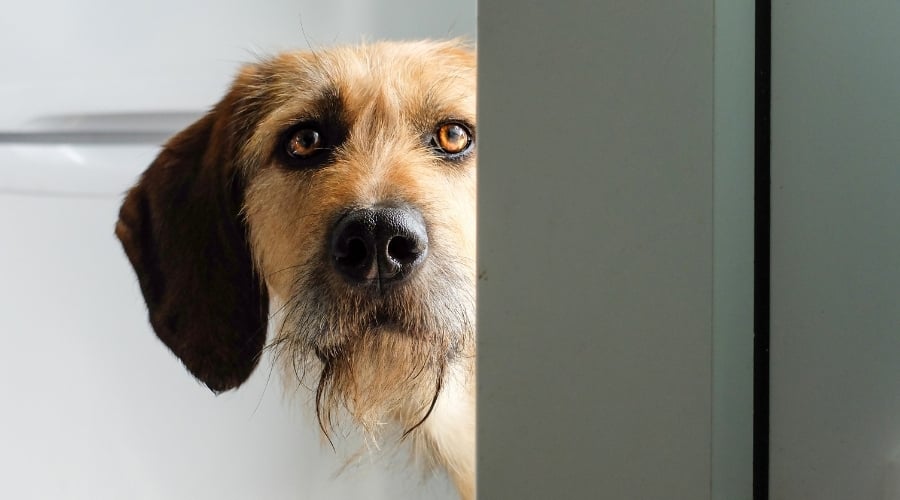
Dogs are naturally curious creatures, especially regarding the people they adore. If something happens in their house, they feel entitled to front-row seats. Whether you are cooking, folding laundry, or just walking to the bathroom, your dog has deemed it necessary to monitor the situation closely. It is not just about attention but about being in the know. Much like a child resisting bedtime when guests are over, your pup does not want to miss a single moment of the action.
This fear of missing out (FOMO) can be especially strong in inquisitive breeds like Beagles, Border Collies, and Terriers, who are wired to investigate their surroundings. They are not just following you. They are gathering intel. Who knows? Maybe there is a snack involved. Maybe the door will open to an adventure. They may finally solve the mystery of where you go when you leave. The possibilities are endless, and your dog is determined to stay on top of it all.
6. Scaredy Pup? Why Some Dogs Hate Being Alone
Some dogs are not just afraid of being away from their owners; they are afraid of being alone, period. Unlike separation anxiety, which is rooted in attachment to a specific person, these pups struggle with a more profound insecurity about their environment. The world feels unpredictable, unfamiliar, or even unsafe, and they are not quite sure how to navigate it without the comfort of company.
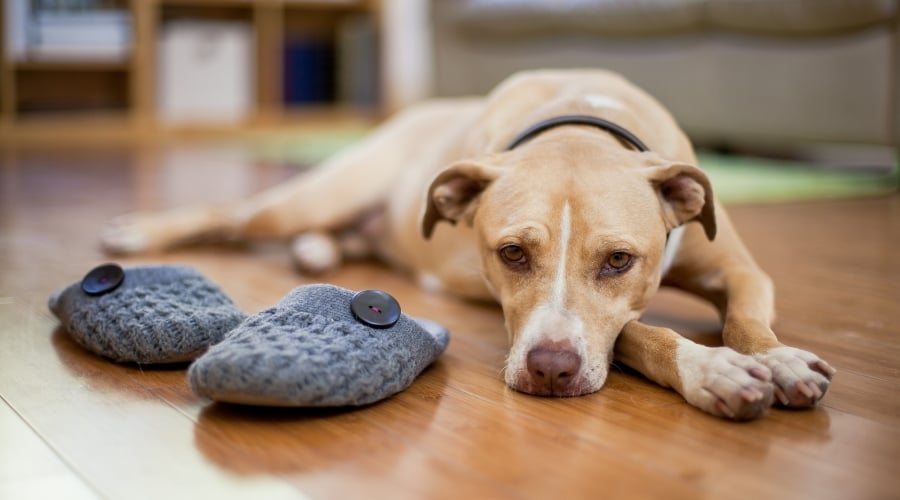
For these dogs, solitude is not just lonely. It is overwhelming. They might whimper when left in an empty room, hesitate to settle down unless someone is nearby, or constantly check in to make sure they are not suddenly alone. Some pace anxiously, while others freeze up, unsure of what to do without a reassuring presence. The fear is not about missing you specifically; it is about missing security.
This kind of anxiety can stem from many things, including past trauma, lack of confidence, or simply a personality that craves companionship. Rescue dogs, in particular, may struggle with this if they have experienced abandonment or inconsistent environments. Even well-loved pups can feel this way if they are not properly socialized or if they are naturally more sensitive.
Dogs that are afraid of being alone may follow their owners around at all times. They may also appear on edge or aggressive and are unable to settle down. They may also pace around their home and engage in other bad behaviors. Some examples may be a newly adopted dog, one that moved into a new home, or one that is simply insecure in their skin.
Helping a dog feel safe on their own takes patience and positive reinforcement. Encouraging independence through slow desensitization, interactive toys, and safe spaces like cozy crates or designated “calm zones” can help. Building their confidence with training and small, successful moments of alone time can reassure them that solitude does not have to be scary. Over time, with gentle reassurance, they can learn that being alone does not mean being abandoned and that they are safe, even when no one is watching.
7. Velcro Dogs: The Loyal, Lovable, and Slightly Clingy Shadows
Ever feel like you have a fluffy, four-legged shadow? One that follows you from room to room, watches you brush your teeth like it’s a thrilling drama, and looks personally offended every time you close the bathroom door? You may have a velcro dog.
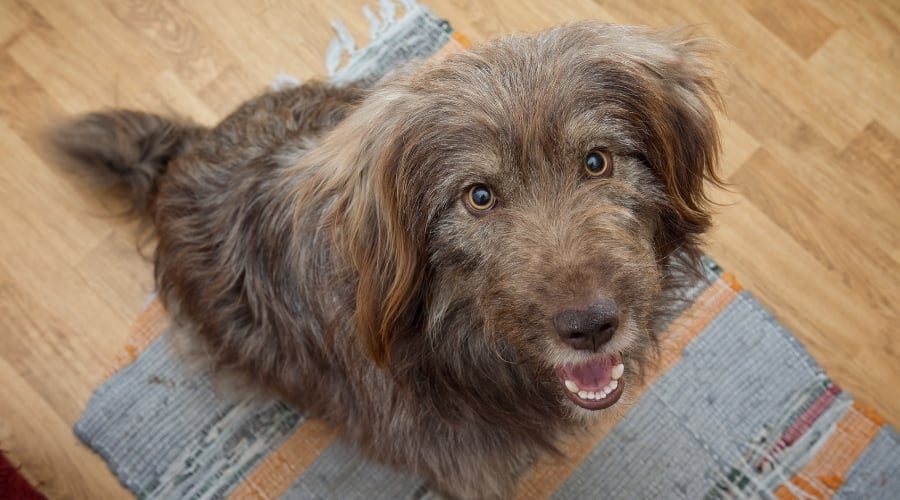
Velcro dogs are the pups who have decided that personal space is not a concept they recognize. They are needy, affectionate, and utterly devoted to being wherever you are at all times. Cooking in the kitchen? They are right under your feet. Sitting on the couch? They are pressed up against your leg like they might float away if they don’t. Walking to another room? They have already anticipated your destination and are waiting for you.
Some breeds are more prone to velcro dog behavior than others, especially toy breeds like Chihuahuas, Cavalier King Charles Spaniels, and Pugs, who have spent generations being bred for companionship. But let’s not forget Labrador Retrievers, German Shepherds, and Dobermans, who take loyalty to a whole new level. These dogs are not just affectionate. They are dedicated. They would probably insist on holding your hand 24/7 if they had opposable thumbs.
While their love can be overwhelming at times (try sneaking anywhere without those big, soulful eyes watching your every move), it is also one of the most endearing things about them. Your velcro dog is not just following you out of habit. They genuinely feel happiest when they are by your side. So next time you trip over them or feel their warm breath on your ankle while doing laundry, just remember: in their world, you are the best thing that ever happened, and they never want to miss a single second with you.
8. Oops, Did You Accidentally Train Them to Be Clingy?
You might think your dog follows you everywhere because of their deep, unwavering love for you, and you are not wrong. But there is also a good chance you have accidentally reinforced this behavior without even realizing it.
Dogs are masters of reading our actions, and if trailing you from the kitchen to the living room gets them a pat on the head, a treat, or even just a casual “Hey, buddy!” they quickly learn that following you = reward. And once they figure that out? Good luck getting a moment alone.

Think about it. Do you talk to your pup as they trot beside you from room to room? Maybe you instinctively reach down and give them a scratch behind the ears every time they appear at your side? Do you sometimes toss them a treat just because they look extra cute while staring up at you? Congratulations, you have officially reinforced velcro dog behavior. And if your dog is particularly food-motivated, they are now fully convinced that staying glued to you is their full-time job because, hey, there could be snacks involved.
Before you resign yourself to a lifetime of never walking alone, take a moment to examine your own behavior. Are you rewarding your pup’s constant companionship, even unintentionally? If you want to encourage a little more independence, try resisting the urge to engage every time they follow you. Give attention on your terms, not just because they happen to be underfoot. And if all else fails, just embrace the fact that you now have a permanent, adoring sidekick who believes your every move is the most important event of the day.
Clingy, Confident, or Cautious? How Age Affects Your Dog’s Need to Stay Close
Just like humans, dogs change their habits as they grow older, including how much they stick to you like a shadow. Whether they are tiny fluffballs or wise old companions, their reasons for following you around evolve as they age.
Puppies: The Tiny Velcro Squad
Ever feel like you have a furry little stalker? That is your puppy, and they have no shame about it. Puppies are basically adorable sponges, soaking up everything about the world through you. They stick close because you are their lifeline for food, safety, and all-important belly rubs. Plus, let’s be honest; they have not quite figured out that they can survive in another room without you or that you will probably be back in five seconds.
Adult Dogs: The Independent or Not-So-Independent Stage
As your dog matures, they might flex their independence, some more than others. While some become content doing their own thing, others continue their faithful sidekick routine, especially if they were encouraged or spoiled with attention from an early age. Reinforce the habit enough, and congratulations, you now have a permanent shadow for life.
Senior Dogs: The Wise, Devoted Companions
As dogs age, they tend to become more dependent again. Vision fades, hearing gets iffy, and suddenly, they are back to being your tiny shadow. Not because they are clingy but because they genuinely feel safer near you. You are their trusted anchor in a world that is becoming a little harder to navigate. They have earned the right to demand unlimited snuggles and companionship at this stage.
No matter the age, if your dog follows you everywhere, it is really just their way of saying, you are my person, and I trust you with my whole heart. And honestly, what is better than that?
Should You Break Up With Your Shadow? When to Step In
Overall, this is not a harmful behavior for our furry friends to participate in. Most dogs simply love being in their owner’s company and choose to be at our side as often as possible. However, if your dog’s constant presence is getting in the way, there are a few ways to limit this behavior.
Breaking the Habit: 5 Vet-Approved Tips to Help Your Dog Gain Healthy Independence
If your dog is your constant shadow, never letting you out of its sight, it might be time to encourage a little more independence. While their devotion is heartwarming, fostering confidence and self-sufficiency can help them feel more secure and reduce stress for both of you. Here are five vet-approved tips to help your pup break the habit of sticking to you like glue.
1. Give Your Dog Something to Do
A busy dog is a happy dog. Before leaving the room, hand your pup a favorite toy or an engaging puzzle feeder. This shifts their focus from following you to something fun and rewarding. Many dogs just need a little distraction, and a good chew toy or a game of treat-hunting can keep them occupied while you sneak off for some well-earned alone time.
2. Use a Baby or Dog Gate for a Gentle Barrier
If you need to keep your dog in one area without completely cutting them off from the action, a baby or dog gate can work wonders. It allows them to see you and feel included without physically being underfoot. Unlike a crate, it gives them more space to move while still reinforcing that they do not need to follow you everywhere.
3. Practice the “Stay” Command
Basic training is not just about obedience; it is about confidence. Teaching your dog to stay in one place, even when you move out of sight, helps them feel more secure on their own. Start with short distances, reward them for staying put, and gradually increase the challenge. Over time, they will learn that being apart from you, even briefly, is perfectly fine.
4. Identify Any Underlying Anxiety
If your dog seems overly attached, take a step back and evaluate potential triggers. Have there been recent changes in their routine? Are they getting enough exercise and mental stimulation? Have you unintentionally reinforced their clinginess by always engaging with them when they follow you? Understanding what drives their behavior is key to helping them feel more at ease.
5. Boost Their Confidence
A dog that feels secure is less likely to panic when left alone. Confidence-building activities like interactive food puzzles, short solo play sessions, and exposure to new environments can help. Training exercises, agility courses, and positive social experiences also strengthen their independence. The more self-assured your pup becomes, the less they will feel the need to follow your every step.
Encouraging independence does not mean you love your dog any less. It means you are giving them the tools to feel safe, happy, and confident, even when you are not right by their side. With a little patience and consistency, your dog will learn that alone time is not so bad after all.
Weird but True: Other Odd Things Dogs Do and Why
Dogs are full of love and loyalty, but they also have some downright baffling habits. From rolling in the stinkiest things they can find to barking at absolutely nothing, their quirks leave us wondering what is going on in those furry little heads. Rolling in poop, for example, might be an instinct from their wild ancestors, who used strong scents to camouflage themselves. Barking at seemingly nothing is usually their ultra-sensitive hearing picking up distant sounds, but let’s be honest, sometimes it feels like they are just messing with us. Some dogs like to stare at you while they poop; of course, eating poop can mean a few different things, from liking the taste to not getting the right food.
Other strange behaviors include being afraid of the dark, which can stem from poor night vision or past experiences, and spinning in circles before they poop or before lying down, a leftover instinct from when wild dogs trampled grass to make a comfy bed. And then there is tail chasing, which is either a sign of boredom, playfulness, or an elaborate game they refuse to explain. No matter how odd their habits may seem, one thing is for sure. Life with a dog is never dull. If you have a story to share or want to chat with other dog owners and experts, head over to our forum to connect with us.
